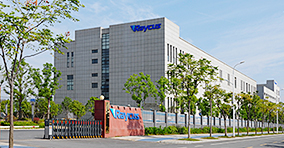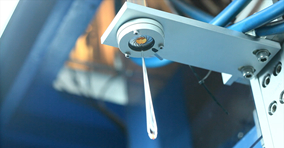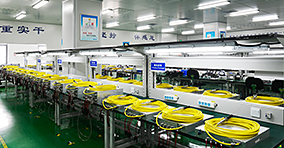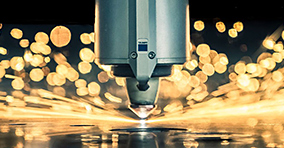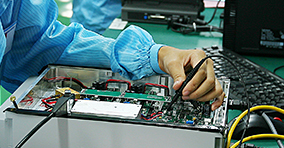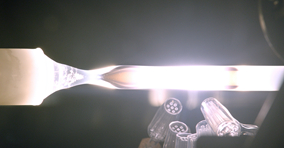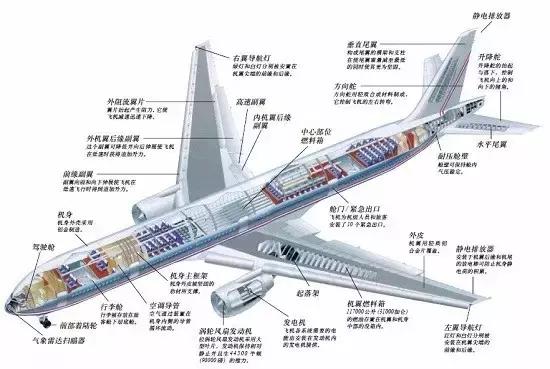On May 5th, the circle of friends who must have countless friends was blown away by a blockbuster news, that is, the C919, a new generation of large passenger jet independently developed by China, successfully made its first flight at Shanghai Pudong International Airport . This marks the historic breakthrough of the “big airplane dream” that has been haunting the Chinese nation for a century, and finally a soaring blue sky on the blue sky is a large passenger aircraft developed in accordance with world advanced standards.
Revisiting the first flight of C919 straight into the sky at the moment is very powerful
If you want to “refine” all the complicated manufacturing technologies and equipment applied to domestically produced C919, then you can’t talk for three days and nights. No matter from the aircraft fuselage to aircraft components to the processing of various materials, many of them are “Made in China” … However, in combination with C919, Xiaobian today wants to share with everyone a variety of laser technologies. Important applications in the aerospace field.
C919 structure diagram at a glance
The fastest knife: laser cutting of aviation materials and components
Compared with traditional cutting methods, laser technology shows many advantages, such as small laser spot, high energy density, fast cutting speed, small thermal deformation, high precision, strong flexibility, low noise, good cutting quality, high production efficiency, and can save The application of large abrasive tools and so on. In recent years, this “fastest knife” has been widely used in the field of aviation manufacturing.
For example, the laser can cut a series of high-hardness, high-melting metal and non-metallic special aviation materials, including titanium alloys, aluminum alloys, nickel alloys, chromium alloys, stainless steel, beryllium oxide, composite materials, plastics, ceramics and quartz, etc. . In the manufacturing process of aviation equipment, laser cutting is also applicable to countless parts: engine flame tube, engine case, aircraft frame, aircraft skin, wing stringer, tail wall panel, honeycomb structure, helicopter Main rotor …
Traceless, fast and flexible-what laser welding says
Controllable welding input heat, minimal deformation rate of parts after welding; no hidden danger of electrode contamination or damage, lowest equipment wear and deformation rate; welding is not limited by distance, can realize automatic high-speed welding; laser beam is not affected by magnetic field, welding accuracy High; no vacuum, no radiation protection … just these benefits listed above, it is not difficult to find out how big the laser welding is in aircraft manufacturing.
The most widely used laser welding is welding of thin-walled structures. In the aviation structure, the aluminum alloy fuselage panel of the European Airbus series passenger aircraft is more typical . This welding structure can reduce the weight of the aircraft fuselage by about 20%, reducing manufacturing costs by nearly 20%. Take A380 as an example, the 6056/6013 laser welding structural design used in the fuselage wall panel, in view of eliminating the flanges used to connect with the skin, reducing the structural weight by 5% -10%, At the same time, costs were reduced by about 15%.
Let us look again at the C919 aircraft. It is reported that this time, Harbin Institute of Technology also made important contributions to the “takeoff” of C919 large aircraft : including the research on the design of the C919 aircraft’s central wing composite rear beam reinforcement design, the C919 aircraft’s aluminum alloy laser welding technology, and Equipment research. Dating back to 2011, the research and development team led by Professor Chen Yanbin, director of the State Key Laboratory of Advanced Welding and Connection of Harbin Institute of Technology, cooperated with SAIC to undertake the development task of “dual beam fiber laser welding aluminum alloy body panel technology and equipment technology”. .
After nearly four years of intensive research, it finally broke through key technologies such as aluminum-lithium alloy double-sided fiber laser synchronous high-speed welding technology, dual-robot coordinated control, offline welding trajectory offline programming, and large-scale gantry high-speed motion accuracy control. The dual-fiber laser welding equipment linked with the axis numerical control and the robot group was delivered to COMAC Shangfei Company at the end of 2015.
C919 goes straight to the sky
Today, additive manufacturing (commonly known as 3D printing) is no longer a new word, and it is increasingly used in various industries. As aerospace vehicles become more advanced, more and higher requirements are imposed on their structural components, such as light weight, long life, high reliability, and structural and functional integration. In this case, the additive manufacturing technology is a “magic bullet.”
The application of additive manufacturing in the aviation field mainly covers the following aspects: the processing of large-scale integral structural components and load-bearing structural components, which aims to shorten processing cycles, reduce processing costs, optimize structural design, reduce structural weight, and save high aviation materials Dosage; processing functional parts with complex shapes, breaking design constraints brought by traditional processing technology; transforming traditional manufacturing processes through laser combined manufacturing technology to achieve composite processing.
It is reported that a large aircraft has about 4 million parts, and some of the parts of the C919 large passenger aircraft that flew for the first time adopted the currently popular 3D printing technology. According to the data from AVIC, since 2001, China has begun to focus on the development of laser 3D printing technology based on laser rapid prototyping of titanium alloy components. The central wing of the C919 passenger aircraft is 3 meters long and belongs to large titanium alloy components. The introduction of 3D printing technology directly solves the manufacturing bottleneck of the titanium alloy structural parts of the C919 aircraft. Meaning.
Generally, aerospace components have complex structures and high manufacturing costs. Once defects or defects occur, they can only be replaced as a whole, which will often cause hundreds of thousands or even millions of yuan in losses. However, the use of 3D printing technology can use the same materials to repair defects, and the performance of parts after repair is not affected, which significantly reduces time and money expenditure. At the same time, the 3D printing process that reflects the principle of additive manufacturing can also convert raw materials. The utilization rate has increased by more than 90%.
It is understood that this C919 domestic large aircraft has used this technology to create a series of titanium alloy parts for the aircraft’s main windshield window frame, wing, and fuselage interface.
Of course, the above is just the tip of the iceberg in the application of laser technology in the aerospace world. Other technologies such as laser cladding, laser near-shape manufacturing, laser impact strengthening, laser punching and marking have also been deeply applied in aircraft manufacturing. In the future, there will be more and more new technologies, new processes, new fields and new applications waiting for us to develop and dig.


